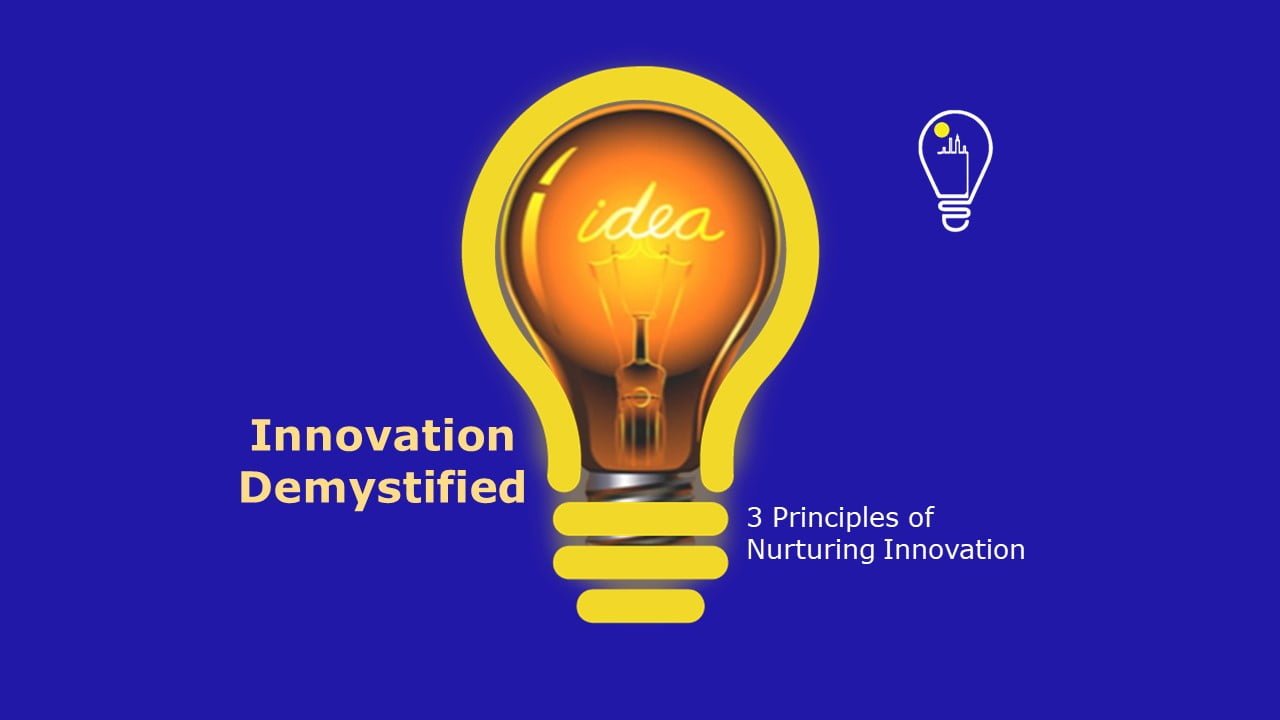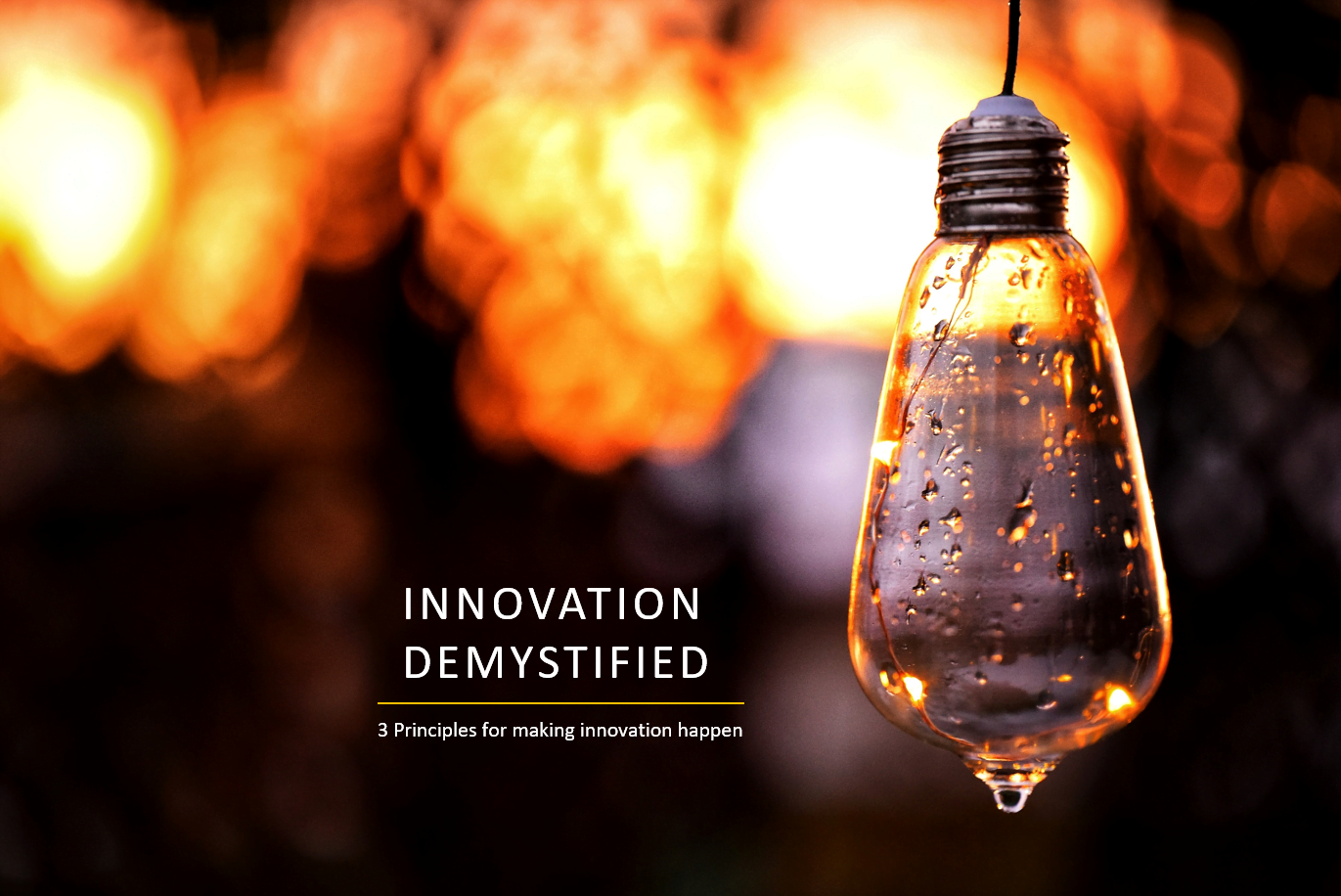
Innovation for Organizations Demystified – 3 Main Principles for Making Innovation Happen
The concept of innovation seems to have become a fad for many companies and a topic for coffee table discussions. It is tough these days to take a balanced view when talking about innovation. What we must understand is that innovation is neither a magic wand nor a panacea. Nor is it a word to be used merely as a passing remark. In fact, the term ‘continuous improvement’ may be more relevant to fully grasp the meaning and purpose behind innovation, especially in the case of manufacturing businesses.
Let us deep dive into what we really mean when we talk about innovation for organizations.
- Innovation is a conscious routine. It just doesn’t happen overnight
It can be easy to mistake innovation as an instant breakthrough of ideas especially when we read biographies of the world’s successful leaders or read about business successes. But that is not true at all. Innovation is the result of a series of small, planned, recurrent thoughtful actions. What businesses really need is a culture of innovation where incremental changes and continuous improvement are emphasized.
Some of the ways in which great leaders make this happen in their organizations are by –- Setting smaller but regular goals – Smaller goals tend to be more realistic. Also, smaller goals are easier to achieve. Achievement of each smaller goal boosts employee morale and propels them towards continuous growth.
- Giving shape to new ideas with Minimum Viable Prototypes (MVPs) – Making prototypes and continuously improving those based on user feedback minimizes disruptions, brings solutions to market faster, is relatively less expensive to experiment with, and in worst-case scenarios, can be abandoned without having incurred much investment.
- Focusing on learning and continuous improvement – Learning from even the smallest failures and ensuring that each lesson is documented and applied at successive stages in future iterations is what successful leaders focus on to build high impact solutions.
- Identifying gaps and analyzing solutions
There are no unique business problems, only unique solutions. Since time immemorial, businesses have faced the same challenges around revenue, cost, operations, and customer satisfaction. What keeps changing is their avatars.
Battling such challenges calls for an innovation mindset. What makes business leaders successful is that they don’t just come up with products or services. They design solutions. Think of what Apple created with iTunes. It wasn’t about bringing a new product to the market. It was about delivering a unique experience to music lovers, one that had never been seen before. Identifying gaps and delivering a one-of-a-kind solution for addressing them, is what makes innovation happen. - Business happens outside the organization
It is easy to get lost in the organization’s internal affairs – generating new business, optimizing the product mix, tweaking service delivery, streamlining the supply chain, handling disparate teams, analyzing and reviewing performance – the list is never-ending.
Leading business leaders realize that it is the external environment where most of the action happens. Major stakeholders like customers, partners, suppliers, distributors, influencers all are outside the organization. The impact the organization creates is also outside of it; the competitors also emerge outside the organization. So when we speak of innovation, a major focus should be on adding value to entities outside the organization. This can be achieved by –- Conducting regular one-on-one meetings with customers, suppliers, peers, external advisors, consultants, and employees to learn what is changing in the market and how the organization can adapt to the changes quickly and cost-effectively. The concept of Design Thinking also emphasises on empathy as the first and foremost step in figuring out where and how to add value.
- Continually reviewing the competitors’ strategies and ensuring formal analysis within the organization, at least once every quarter, is essential in staying updated and even getting ahead of the rest of the market.
- Engaging with the front-line team, field representatives, and grassroots workers as they directly interact with customers and bring valuable insights. The idea is to establish a channel where information flows freely, without intermediary biases or hurdles.
One good way to strategize on innovation, in the context that best serves your organization and its ecosystem, is to bring in an expert business consultant. An external consultant is required to ensure that the focus is only on future success without getting bogged down by any confirmation bias or hindsight bias or the impediments of daily operations. With a viable strategy, an external consultant can help an organization incorporate innovation in its day-to-day routine, make innovation an indispensable element of the organizational culture, and deliver sustainable value in the long-term
